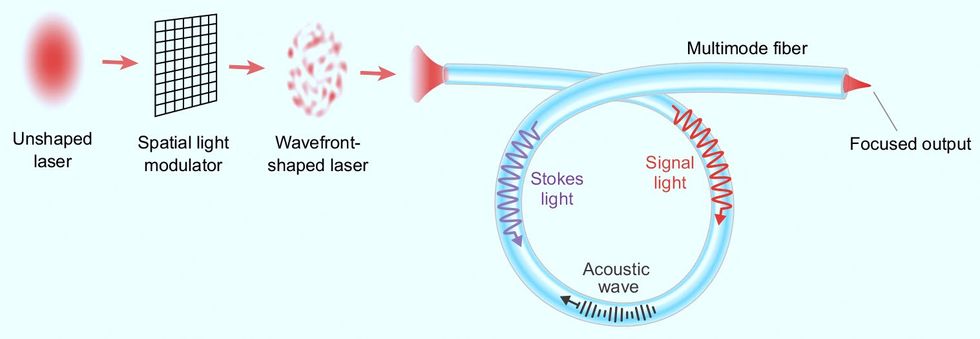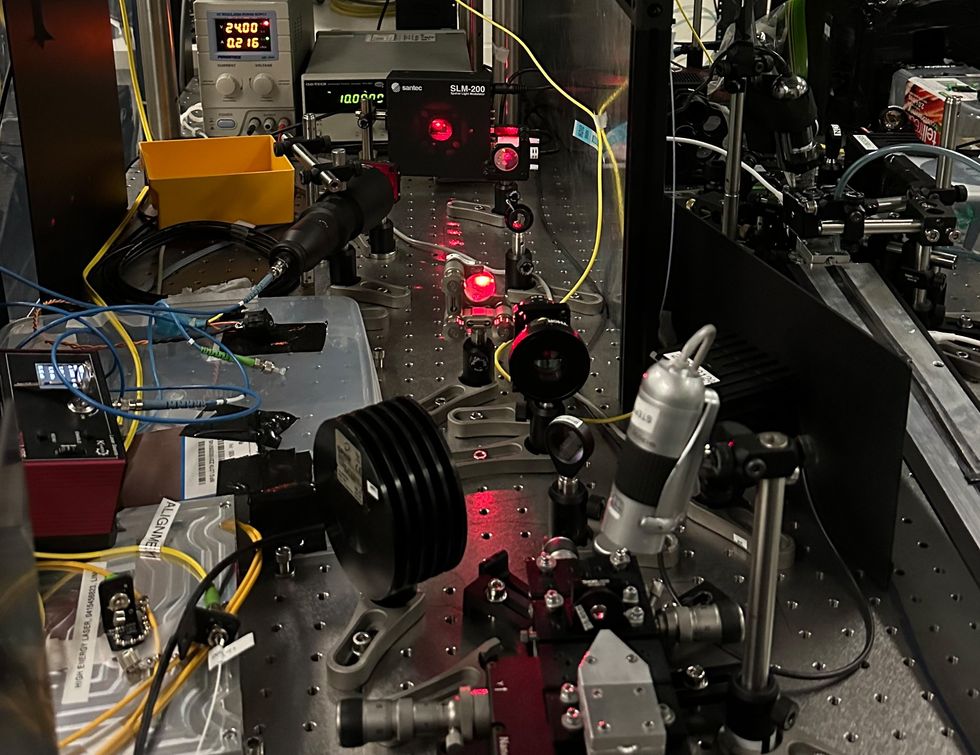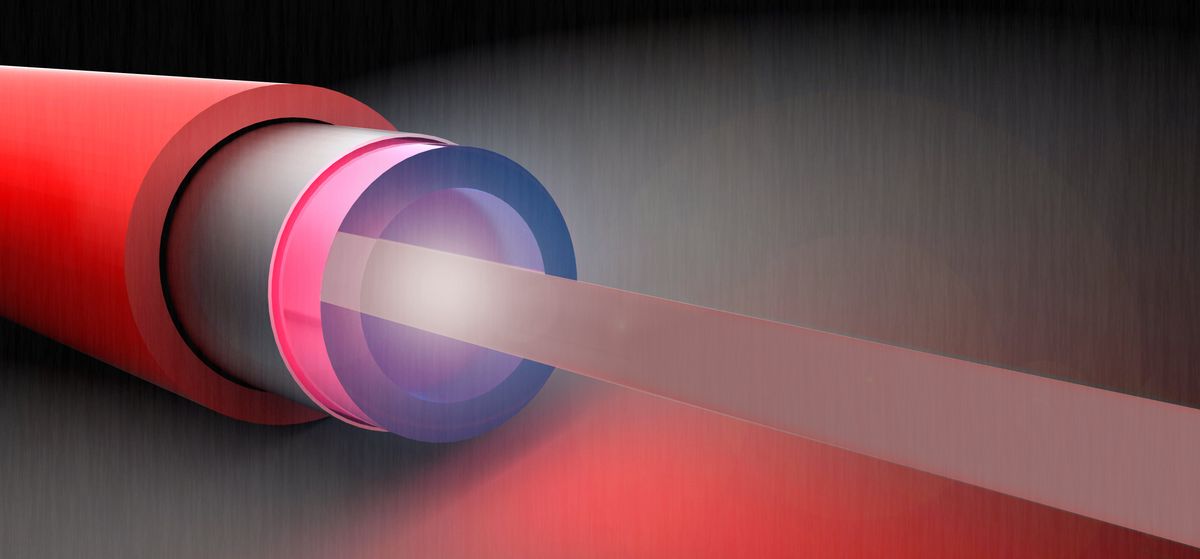Ray guns that can blast drones are among the many potential applications envisioned for so-called fiber lasers. Now scientists have discovered a way to boost the power of these lasers by roughly an order of magnitude while preserving high beam quality, a new study finds.
Fiber lasers get their name from the materials they use to emit light—optical fibers laced with rare-earth elements such as ytterbium. Originally used for industrial cutting and welding, delivering high-energy beams of excellent quality has earned fiber lasers a leading role in field trials of laser weapons.
“Good beam quality allows a beam to travel long distances with high intensity, or to be focused into a very small diameter using a lens,” says study coauthor Stephen Warren-Smith, an optical physicist at the University of South Australia, in Mawson Lakes.
Other applications include wirelessly beaming power over hundreds of kilometers, remote sensing, and manufacturing.
Targets for laser weapons could include “small distant objects, which could be drones, mortars, rockets, and so on,” Warren-Smith says. “Defensive laser weapons have the potential to disable threats at high speed with low cost and an almost unlimited magazine. This is especially important with the proliferation of cheap autonomous drones.”
Small, powerful fiber lasers could have many other applications as well. Recent advances in fiber laser technology have led the Defense Advanced Research Projects Agency to see if the devices could wirelessly beam power over hundreds of kilometers. Other potential applications include remote sensing, manufacturing, and scientific research, Warren-Smith says.
One major roadblock that fiber lasers face when it comes to becoming more powerful is a result atomic vibrations. In solid materials, these vibrations travel in quanta of lattice vibrations (sometimes also called quasiparticles) known as phonons.
When laser power becomes strong enough in optical fibers, the light can interact with phonons. This results in scattering of the light that not only limits the amount of power that reaches a target but can also damage the source of the light.

One way to avoid this effect is to enlarge the fiber core to reduce the intensity of the light. However, a large core often supports a number of modes, or different patterns in which light waves can vibrate. Interference between different modes can lead to random speckles in the light, degrading beam quality.
This problem led scientists to mostly experiment with fibers that only host single modes, but single-mode fibers often pose challenges of their own. For instance, some cannot be coiled into compact packages, and these also overheat easily. Others have proven difficult to mass-produce. All in all, “the output of optical fiber lasers and amplifiers has not progressed significantly in the last decade,” Warren-Smith says.
In the new study, researchers developed a new approach using multimode fibers. This novel strategy helped them scale up power in fiber lasers by three to nine times without sacrificing beam quality. It also works on both continuous and pulsed beams.

“We tried an approach that was very different from what people had been trying,” says study coauthor Hui Cao, a physicist at Yale University.
Cao says she first learned about the problems that high-power lasers experienced in multimode fibers at a 2019 conference. She says she thought that carefully shaping the front of the light waves entering the optical fibers might help overcome these concerns. Previous research showed that wavefront shaping could help control the way in which light behaved in materials—for instance, to help light waves better penetrate biological tissues such as the human brain.
“I talked with a few people there, and they didn’t quite believe me because I was an outsider to the field,” Cao says. “So I put together a research team to work on this project.”
When the scientists used wavefront shaping on the light entering a standard multimode fiber, they could boost the output power by roughly an order of magnitude while avoiding the detrimental effects previously seen in these fibers. They explained that wavefront shaping could excite many different modes in the fiber at the same time, increasing the threshold at which phonons could interact with light.
“We have been able to control the light inside the fiber in a very precise way such that the beam quality can be restored,” Warren-Smith says.
So far, the researchers have shown only that this new technique works on passive fibers. They now want to see if it can work on active fibers, ones designed to amplify the strength of light traveling within them, Warren-Smith says. This in turn could lead to even more powerful lasers.
“There are additional effects that light experiences in active fibers, but we don’t think these should be a big problem to what we want to do with our approach,” Cao says.
The scientists detailed their findings 13 November in the journal Nature Communications.
This article appears in the February 2024 print issue as “Blasting Drones With Fiber Lasers.”
Charles Q. Choi is a science reporter who contributes regularly to IEEE Spectrum. He has written for Scientific American, The New York Times, Wired, and Science, among others.



